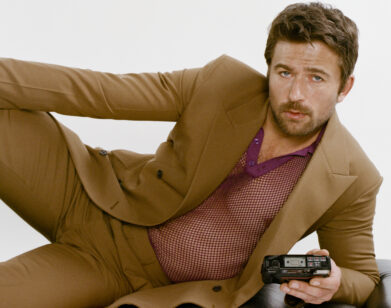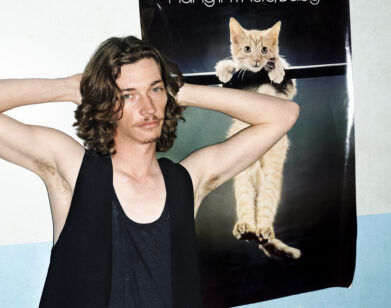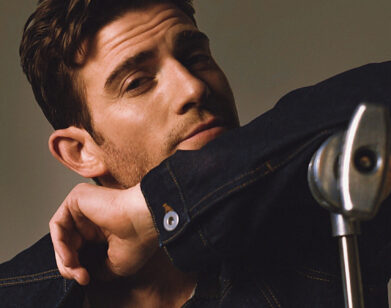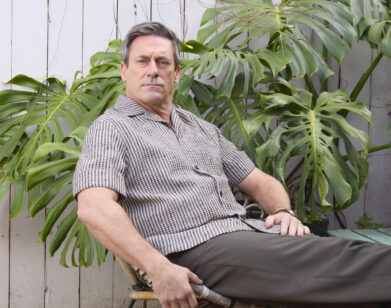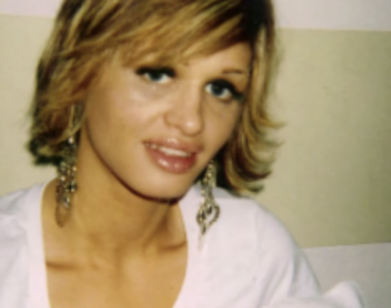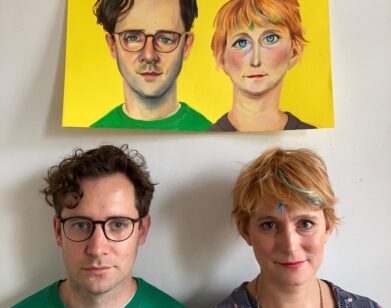Through the Eye of Takashi Murakami
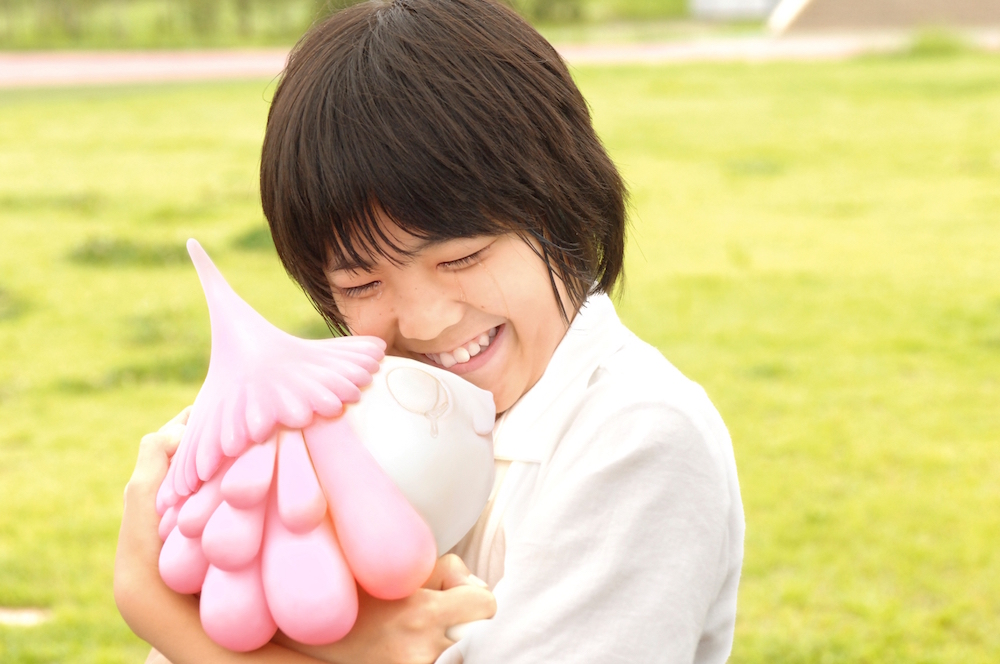
TAKUTO SUEOKA AS MASASHI KUSAKABE IN A SCENE FROM JELLYFISH EYES. © 2013 TAKASHI MURAKAMI/KAIKAI KIKI CO., LTD. ALL RIGHTS RESERVED.
Speaking through a translator, Takashi Murakami thoughtfully admits that he’s wanted to make a film for “a very long time.” The Japanese artist has made his career sharply mining and manipulating cultural currency, pioneering his trademark “Superflat” style, which blends traditional Japanese painting techniques with cheeky pop culture content in a fragmented picture plane. The oft-called “King of Pop” has been dubbed an heir to Andy Warhol, though we would argue the label is somewhat reductive to the scope of Murakami’s practice, which for every ebullient Technicolor smiling flower painting, anime sculpture, or consumable object made in collaboration with Pharrell, Kanye West, or Louis Vuitton, has leveled critiques of Japanese society and has cast meditations on spirituality, grief, and enlightenment. It’s no wonder his first feature film, Jellyfish Eyes, is derived from the same impulse.
The fantastical coming-of-age genre piece, a pastiche of anime, otaku fandom, Hollywood disaster tropes, kung fu, and iconography from Murakami’s past artwork, follows a young boy, Masashi (Takuto Sueoka), who moves to a new town with his mother after his father dies in the wake of the natural disasters caused by 2011’s Tohoku earthquake, and the ensuing tsunami and Fukushima nuclear plant disaster. There he encounters something entirely otherworldly, an adorable jellyfish-like creature named Kurage-bo, who becomes his friend and protector. (In fact, Murakami is wearing a plush hat modeled on the Kurage-bo during our interview.) Masashi, bullied by the boys in his new school, strikes up a friendship with a girl in his class, Saki, and quickly finds out that every child in town has a creature, called a F.R.I.E.N.D. Engineered at a local lab headed by the Black-Cloaked Four, a group of scientists prone to maniacal laughter, the F.R.I.E.N.D.s are designed to siphon energy from the children to create a destructive super-monster, and in the film’s action-packed third act, the children and their F.R.I.E.N.D.s band together to save the town, with Masashi and Kurage-bo at the forefront.
We spoke to Murakami in New York.
COLLEEN KELSEY: How did you decide that for this film in particular, you wanted the focus to be children?
TAKASHI MURAKAMI: When I had the “©MURAKAMI” show in L.A. [at the Museum of Contemporary Art] in 2007, I heard that there was a deluge of strollers at the end of the museum. At the time, I was showing some animated films. Thursday evening or something, there were “free evenings” and there would be tons of young children coming to see my show. I realized, for the first time, that at the core of my audience, there are children. That’s when I started to think about children as my audience. That continues to be the reality now.
KELSEY: I went to a Q&A at the Film Society of Lincoln Center that you did, and something that you said about Jellyfish Eyes was that it was first about the communication between a boy and a girl. Then the earthquake and its aftermath came into the picture.
MURAKAMI: It’s true that the disaster and the accident actually made the story. I’m really interested in the mystery of art and how art emerges. For example, van Gogh or Jackson Pollock, when artists’ lives are crumbling or dissolving, the works contain something about that process that really moves people. Sometimes [in] the misfortune, or the time of difficulty, mysterious artworks emerge. Maybe it’s morose to say this, but the moment I saw the Fukushima power plant explode on TV, that was the moment that I understood the severity of what was happening. When I was young, for about two and a half years, I was a nuclear power plant activist. I was really fearful of the situation. That really motivated me to make a film like this. That was the moment when I encountered this moment of [the] mystery of art and myself.
KELSEY: After working in 2-D, and 3-D sculpture, what was it like to bring movement to your work process?
MURAKAMI: When I’m making the pieces—painting, sculpture—what’s important is watching timing. We can find the pieces exactly, and the ways it could work. But the movies we have to make a composition in a shape. [It was a] super new experience.
KELSEY: The F.R.I.E.N.D.s are described to the kids as “someone who will never betray you.” What else, for you, do they represent?
MURAKAMI: Basically they symbolize children’s desire. So, the children are like frogs or octopi, or funny like monkeys. It’s very straightforward into “how they become” or “emerge” as [a] shape. A good example is Manato, the comic relief guy, who has the monkey as his F.R.I.E.N.D. There’s one scene where they’re both clicking their tongues in the same way. But inside they’re the children themselves. That’s what I was trying to portray in the moment.
KELSEY: What F.R.I.E.N.D. in the film did you relate to the most?
MURAKAMI: The one I really like the most, of course, is Kurage-bo. [He’s] the most complex and can metamorphose into different shapes. That’s really fun and interesting to me. But if I have to say personally, probably Oval. It’s sort of fat and is oblivious to other people. That’s probably the most relatable.
KELSEY: You could recognize many details and characters from your previous artwork. For example, one F.R.I.E.N.D. is modeled off of Miss Ko2, the anime girl. Why did you choose to continue working with these characters, as opposed to making a whole new language for the film?
MURAKAMI: There are actually two reasons. One is very simple, but the preparation period for the film was really short and I had to create a storyline and visuals that would keep [people’s] attention for an hour and a half. So, I had to dig deeper and bring in information with deeper backgrounds. In order to add that depth to the story, I wanted to bring in some of the characters that existed already in my work. And the second is—one thing I really wanted to make clear is that, film is not just something I’m doing as a hobby or on the side. I’m really serious, and I wanted to share that with the fans of my artwork. By putting in these very important characters from my artwork, it created a risk to myself that if the movie fails with these characters in it, then the characters may have passed. I put myself in the position so that I wouldn’t fail this film.
KELSEY: This film is the first part of a trilogy. But in addition to this story, are there any other films that you’re thinking about making?
MURAKAMI: Yes, I’m definitely working on something. One is an animation TV series, a series of 15 episodes, about girls with magical powers. And there are two more projects in the works. One is a story of the process of dying, and the second one if about a man and woman who meet through a social network, and they end up in murder.
JELLYFISH EYES OPENS TOMORROW, JULY 15, AT IFC CENTER, WITH APPEARANCES BY TAKASHI MURAKAMI. A NATIONWIDE RELEASE WILL FOLLOW.

